Plant-Based Eating in South Tyrol

Join Sharon Palmer as she travels to South Tyrol and shares some of her favorite plant-based finds, places to stay, and more.
I just got back from an amazing trip to Brunnenburg, in South Tyrol, which is an autonomous province in northern Italy. Bordered by Austria and Switzerland, South Tyrol is located in the Alps, with vistas of soaring mountains, rich valleys, and steep cliffs with old farms clinging to ledges. The culture is distinctly Tyrolean, which has a more Austrian/German feel, with German the common language, food traditions favoring German traditions, and architecture displaying Tyrolean chalets with beautiful window boxes filled with flowers. This photo above is of one of the prettiest chalets I saw on my trip. This trip was part of my Green Mountain College study abroad program for my MSFS program, as I learned about the food and culture of the region. The wonderful Philip Ackerman-Leist, who has spent three decades learning about South Tyrol first hand, led our trip.
Plant-Based Eating in South Tyrol

San Leonardo in Passiria, Trentino-Alto Adige, South Tirol, Italy
Right off the plane, we drove straight up above the treeline in this section of the alps to observe the amazing view.
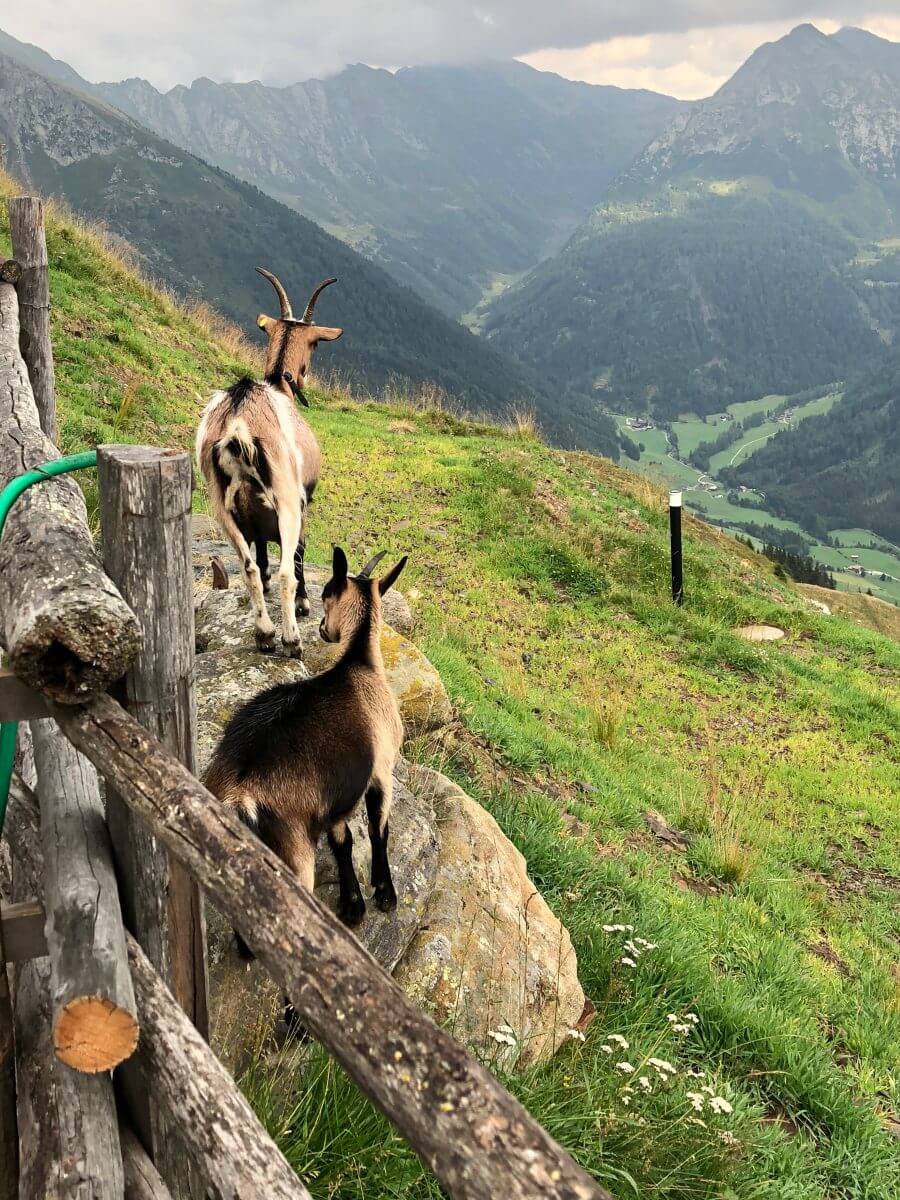
Goats, Guesthouse, San Leonardo in Passiria, Trentino-Alto Adige, South Tirol, Italy
Goats do quite well on the steep pastures of South Tyrol.
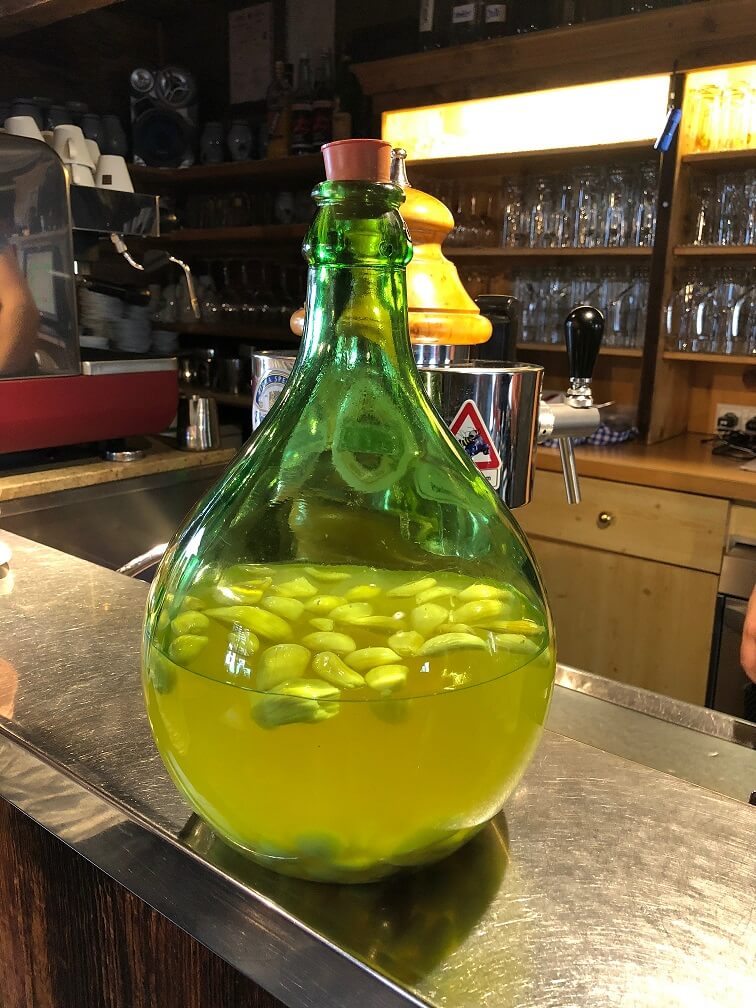
Garlic Schnaps, San Leonardo in Passiria
The first experience of Tyrolean culture included this handmade schnaps with whole garlic–believed to be a health elixir–in a guest house high in the Alps.
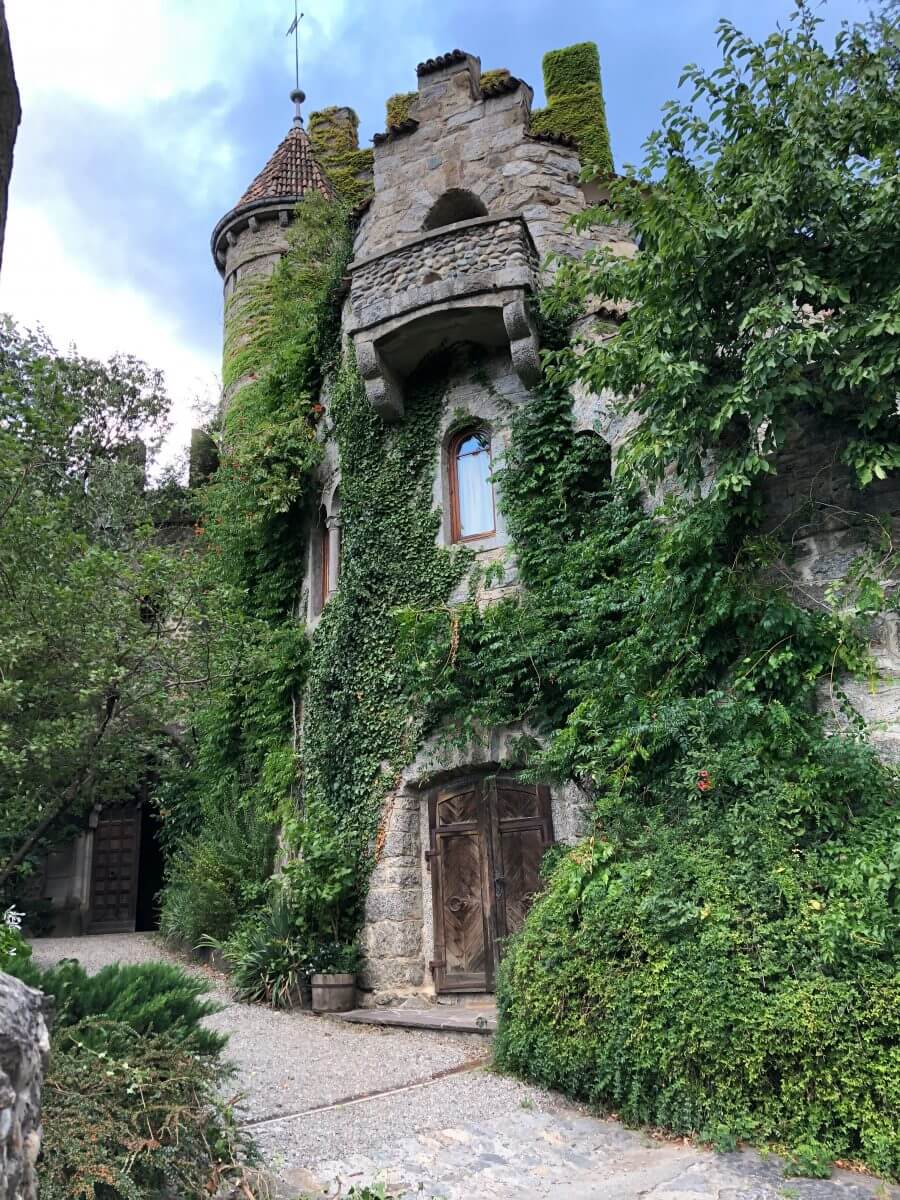
Brunnenburg Castle, South Tyrol
That night, I arrived at Brunnenburg Castle, which was to be my home for the next two weeks, as I studied the food, agriculture, people, and culture of South Tyrol as part of my Green Mountain College Master in Sustainable Food Systems program. Brunnenburg Castle is managed by the family of Ezra Pound, who wrote his classic pieces of literature during his time living here. The 13th century castle was restored by his daughter Mary (who, at 93, still lives at the castle) and her husband. Now, her grandsons Michael and Nik, operate the farm and the castle, with scholars coming from all over the world to study literature and farming. You can learn more about my educational experience at Brunnenburg here.
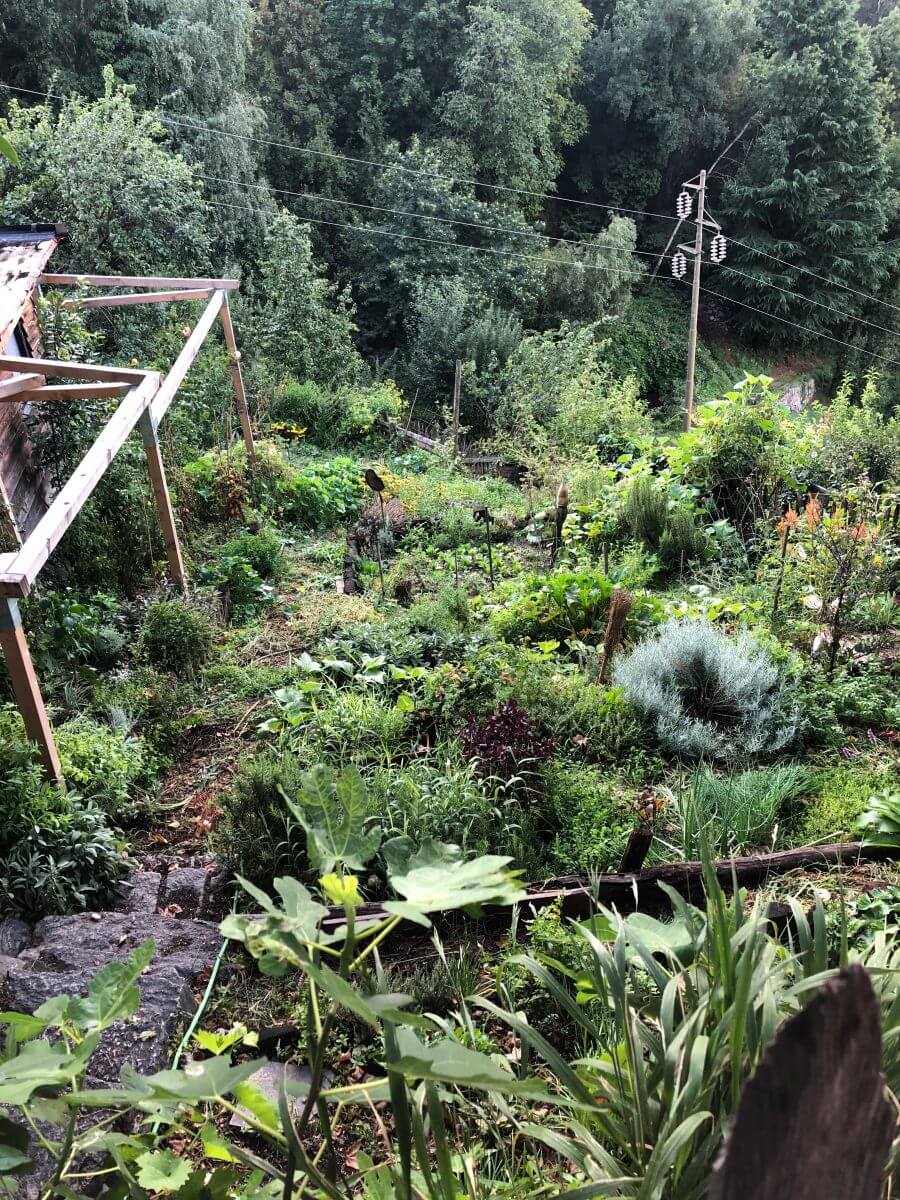
Brunnenburg Castle Farm
Brunnenburg maintains an organic farming operation, producing just about everything they need to sustain the family, including a vibrant vegetable and herb garden.
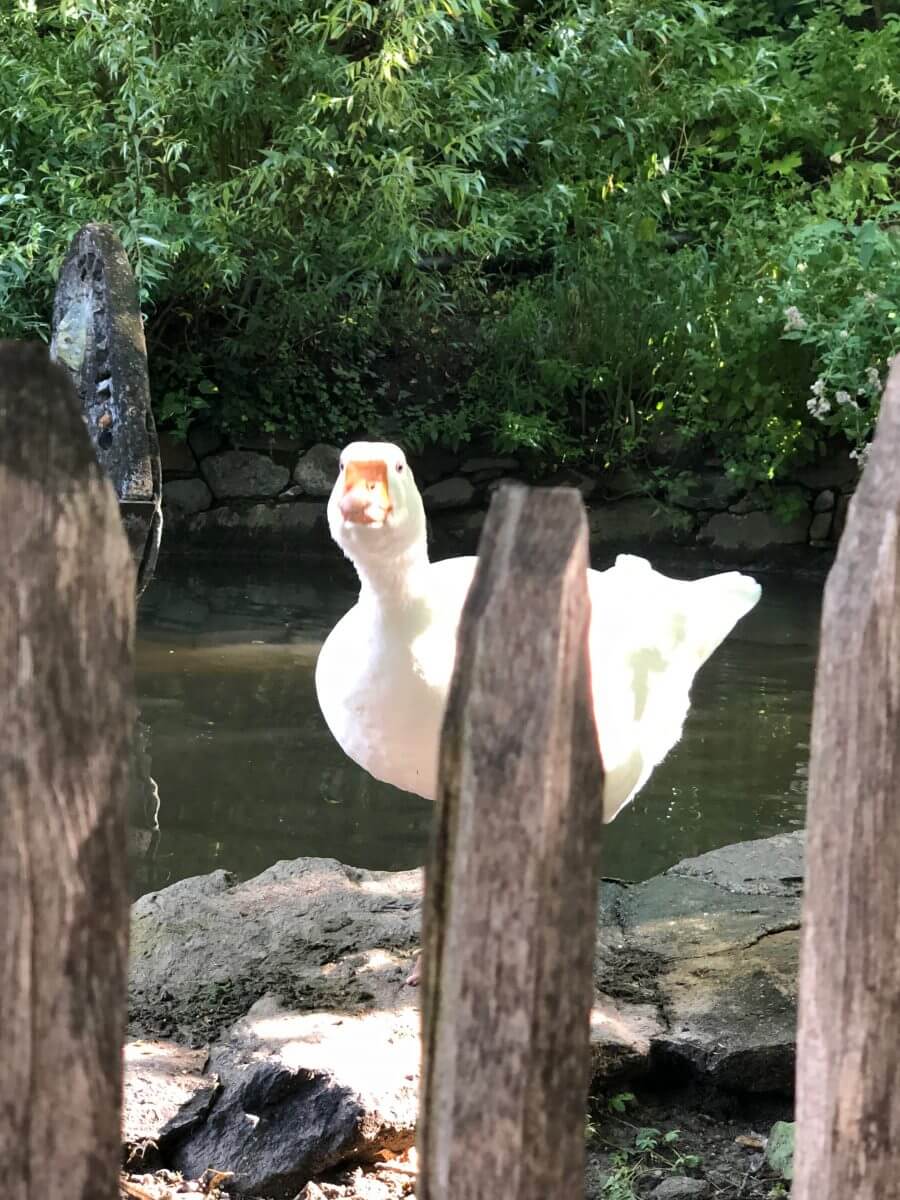
Brunnenburg Castle Geese
The geese and ducks are colorful contributions to the castle farm.
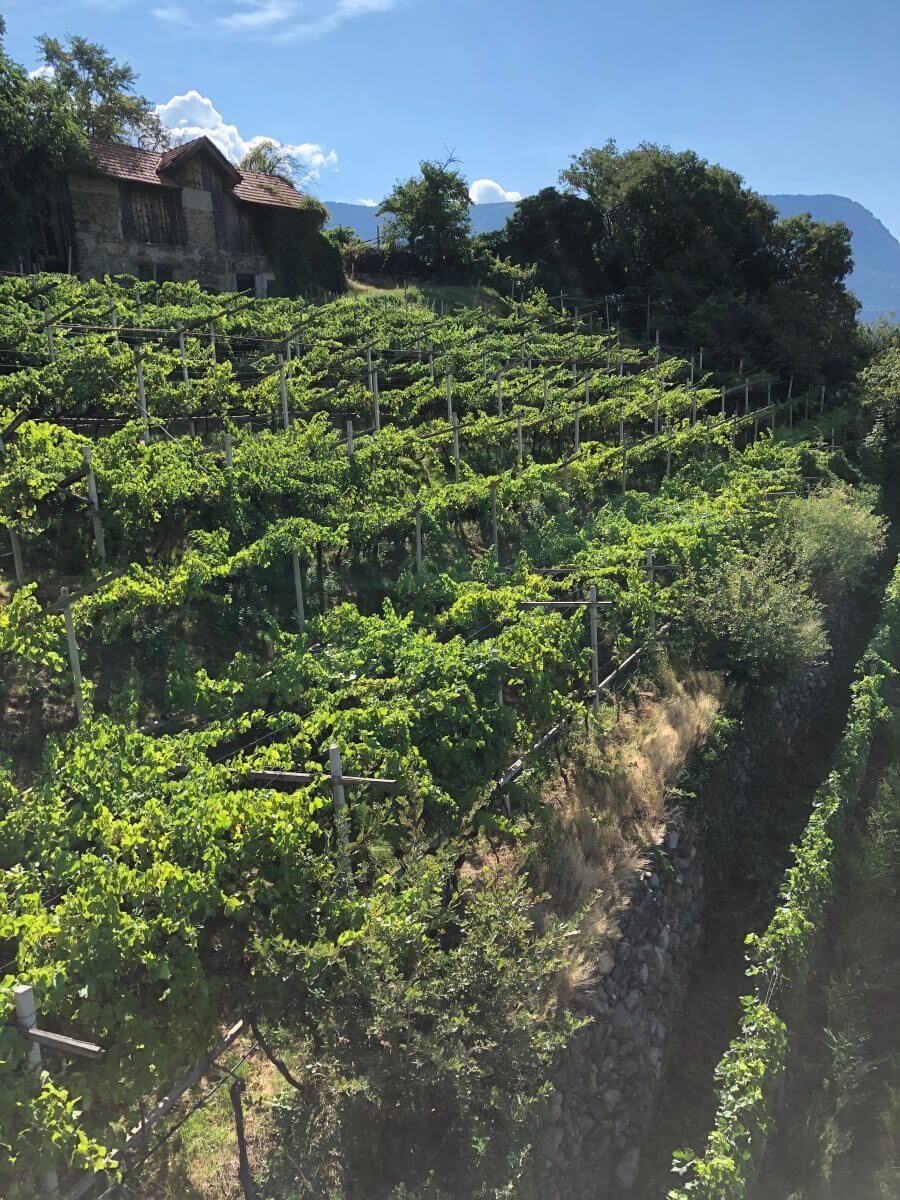
Brunnenburg Castle Vineyard
Nik produces beautiful wines, starting with growing these disease-resistant grapes without the use of pesticides–not even organic ones are applied. I got to spend two days working in the vineyard, and many evenings enjoying Nik’s wines.

Dorf Tirol Local Food Stand
The small town of Dorf Tirol is located near the castle, and a steep walk up the hill offers a respite to visit local shops, enjoy gelato, have a glass of wine, and buy local food from this stand.

Merano Farmers Market
During our stay, we frequented the local farmers markets, such as this one in Merano, a 20-minute trip (or quick gondola ride down the hill) from Dorf Tirol. The Mediterranean climate in South Tyrol means an amazing variety of seasonal produce in the summer.
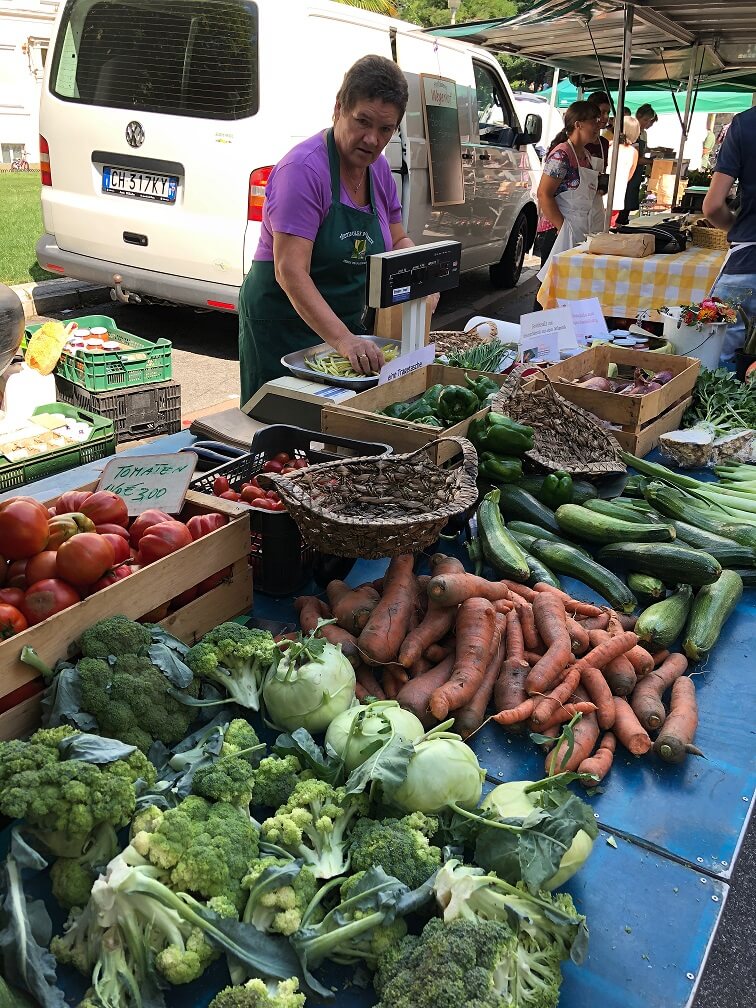
Merano Farmers Market
So much gorgeous produce available–we ate like kings! The castle had a beautiful kitchen, and we cooked many meals there made with local ingredients.
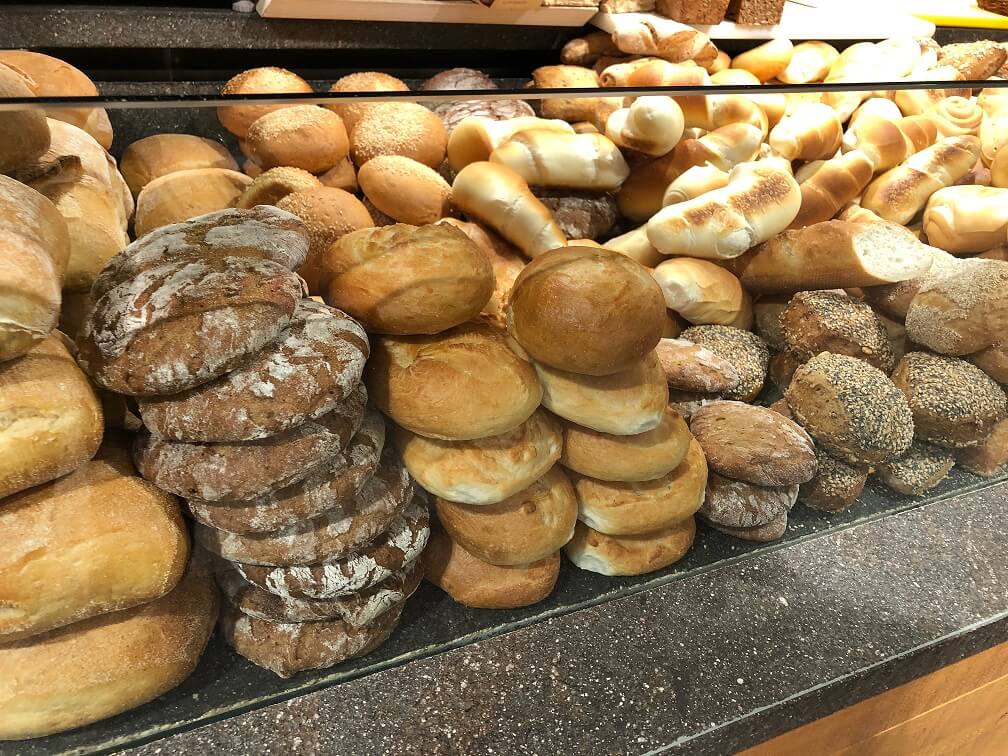
Local breads, Merano
The bread in South Tyrol was astounding–really one of the most remarkable parts of the diet. Many ancient grains, such as rye, spelt, emmer, einkorn, kamut are grown here, and the rustic, hearty, dark breads are the result.

Pretzels, Merano
Of course, pretzels were a main feature, due to the Austrian/German foodways in the region.
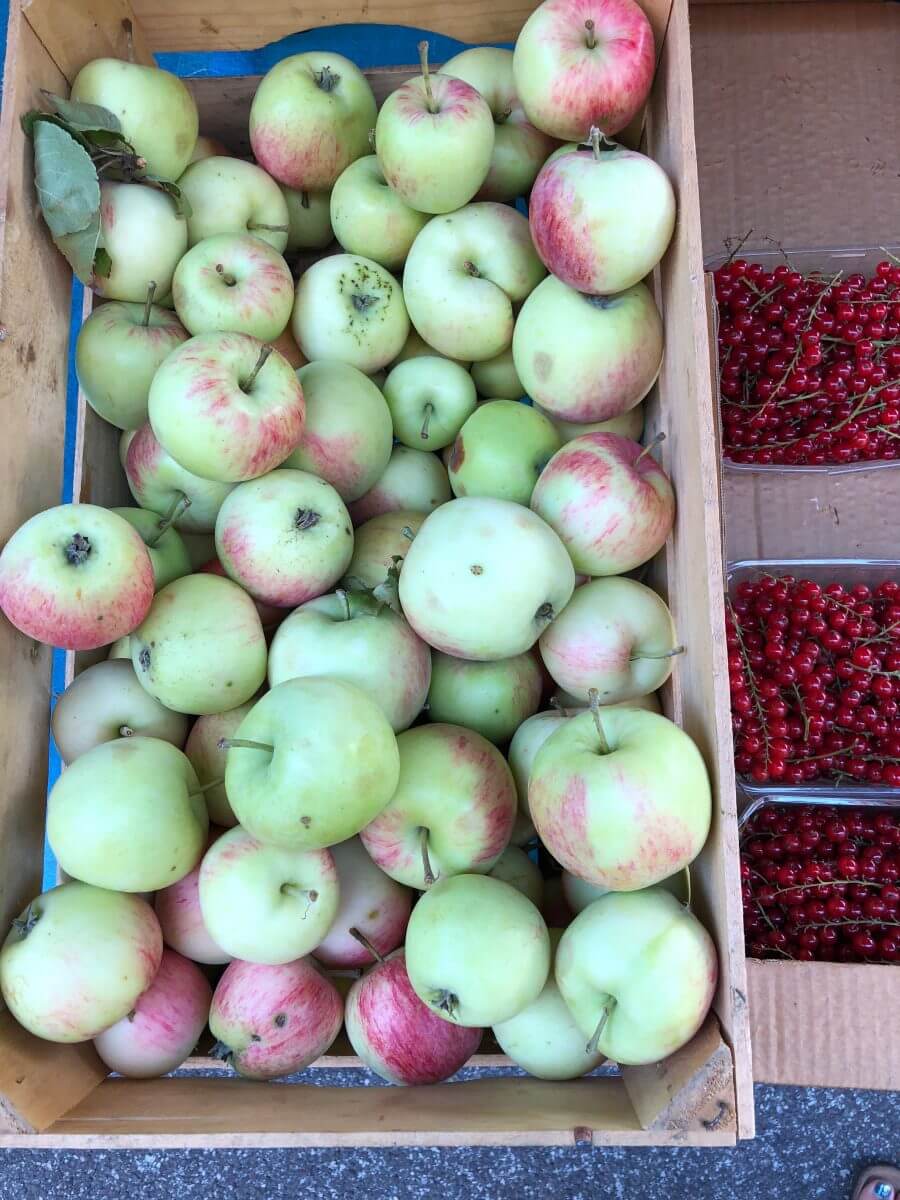
Apples, South Tyrol
Apples are a big deal in South Tyrol. They are the big cash crop, which has caused some issues of concern over aggressive pesticide application and lack of biodiversity. Brunnenburg still grows apples in the traditional way, though.
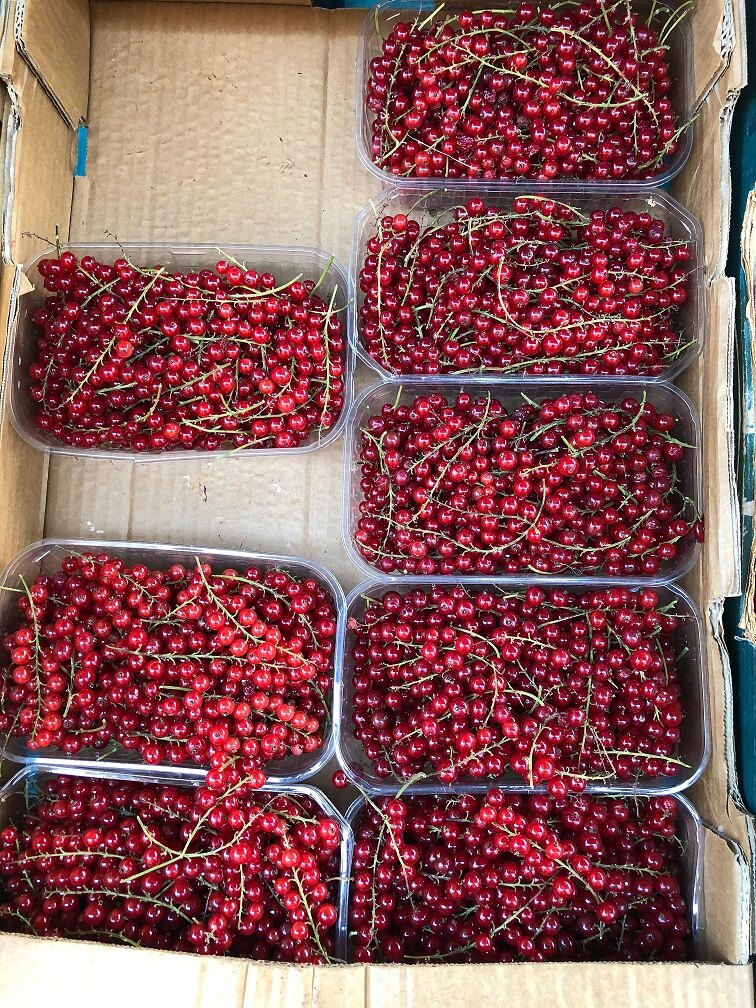
Currants, Merano
It’s so fun having currants in the diet–we included these in our morning muesli and salads.

Schuttelbrot, Merano
This is a traditional style of bread that dates back centuries in South Tyrol. Farmers made this type of hard bread a few times a year, as it was so much work to bake bread, but since it was dried it could last a long period of time without spoilage.
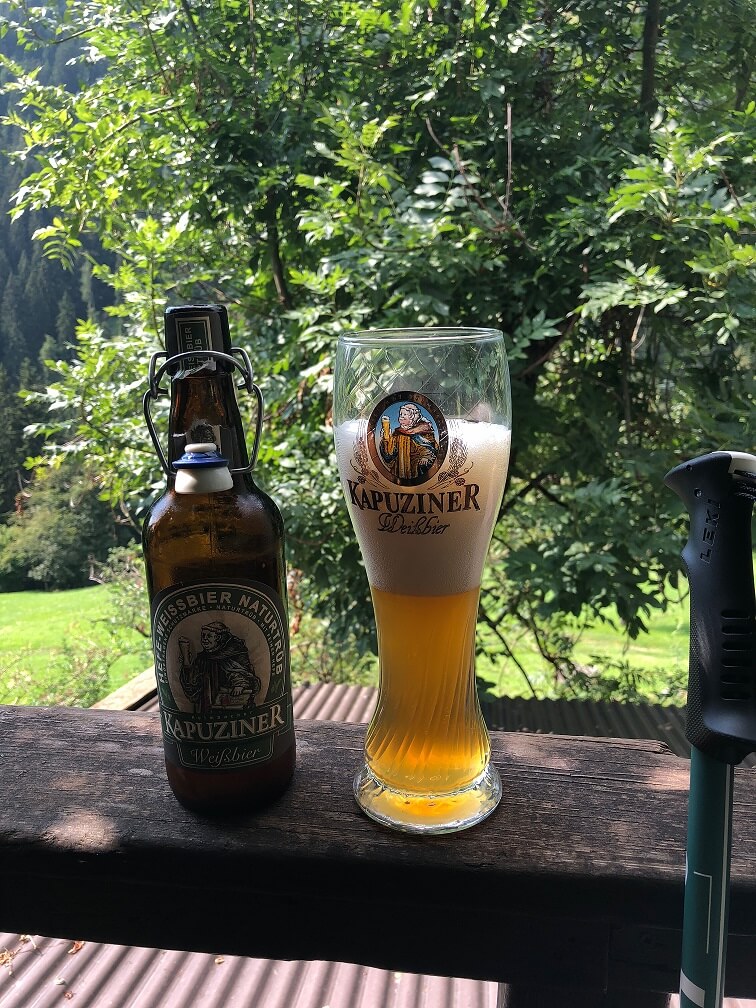
Local Beer, South Tyrol
The German culinary style is on full display in the availability of many types of beer, to be enjoyed at guesthouses, such as this historic one we visited near Dorf Tirol, located at Longfall where we hiked.
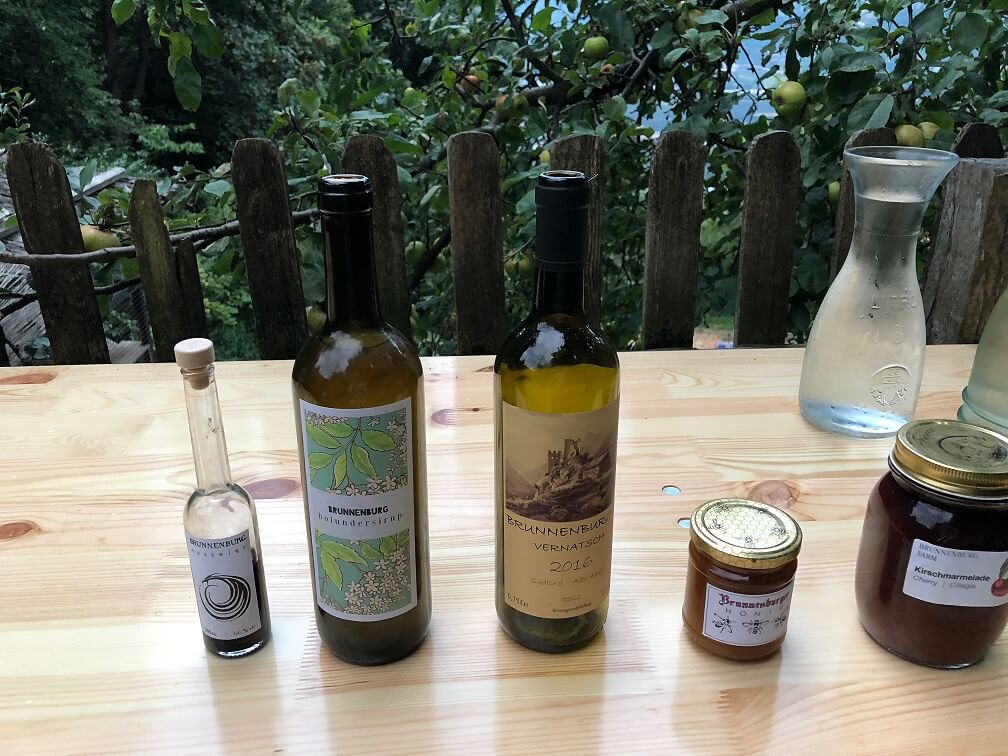
Brunnenburg Wine and Goods
We got to sample Nik’s amazing collection of products from the Castle farm, such as white and red wines, schnaps, and preserves.

Brunnenburg Pear Juice
The Williams pear is prized in South Tyrol, so Nik’s local pear juice is a real treat.

Muesli Breakfast at the Brunnenburg Castle
This was my view for breakfast each day, as I prepared a simple meal in the kitchen and ate overlooking the valley.
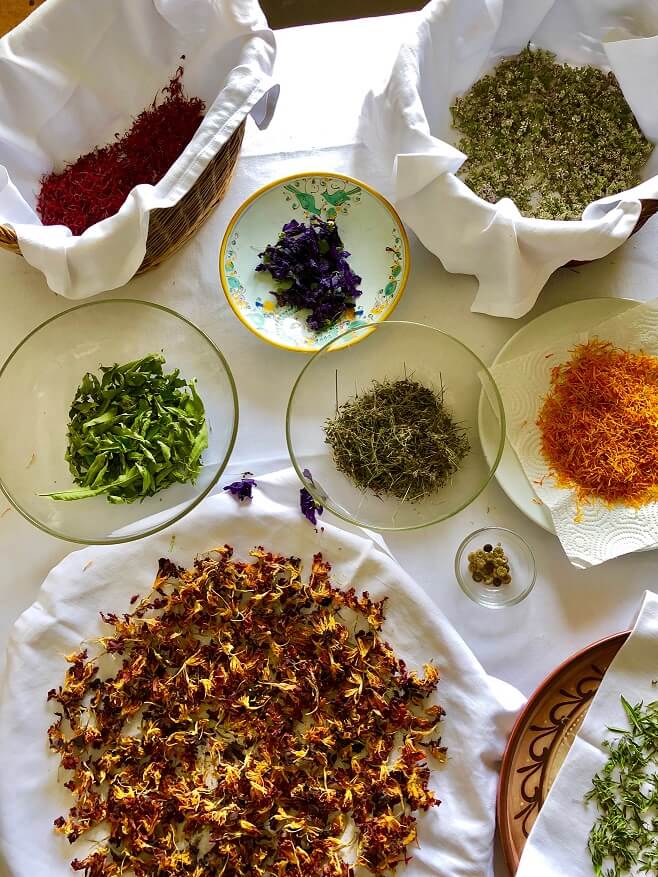
Local Herbs, Konrad Messner
South Tyrol is filled with charming, historic guesthouses, where you can enjoy a home-cooked traditional meal and even a peaceful evening’s rest in a rented room. We enjoyed a wonderful meal at Konrad’s guesthouse, where he was drying summer herbs for use all year long.

Grains, Christoph Hohenegger farm South Tyrol
We got to see how farmer Christoph went from raising dairy cattle to grains (and also became nearly vegan), specializing in ancient grains that are suited to the region.

Krauter Schlossl, South Tyrol
It was really fun visiting this herb garden, where organically grown herbs and flowers are collected for use in herbal oils, teas, foods, and more.

Krauter Schlossl, South Tyrol
Pretty flowers!

Local Garden with Edith Bernhard and Philip Ackerman-Leist
So fun to visit Robert and Edith’s gorgeous vegetable garden, where they are saving seeds and ensuring the heritage and livelihood of many local and traditional plants in the region. Philip, our study tour leader, is leading our discussion.
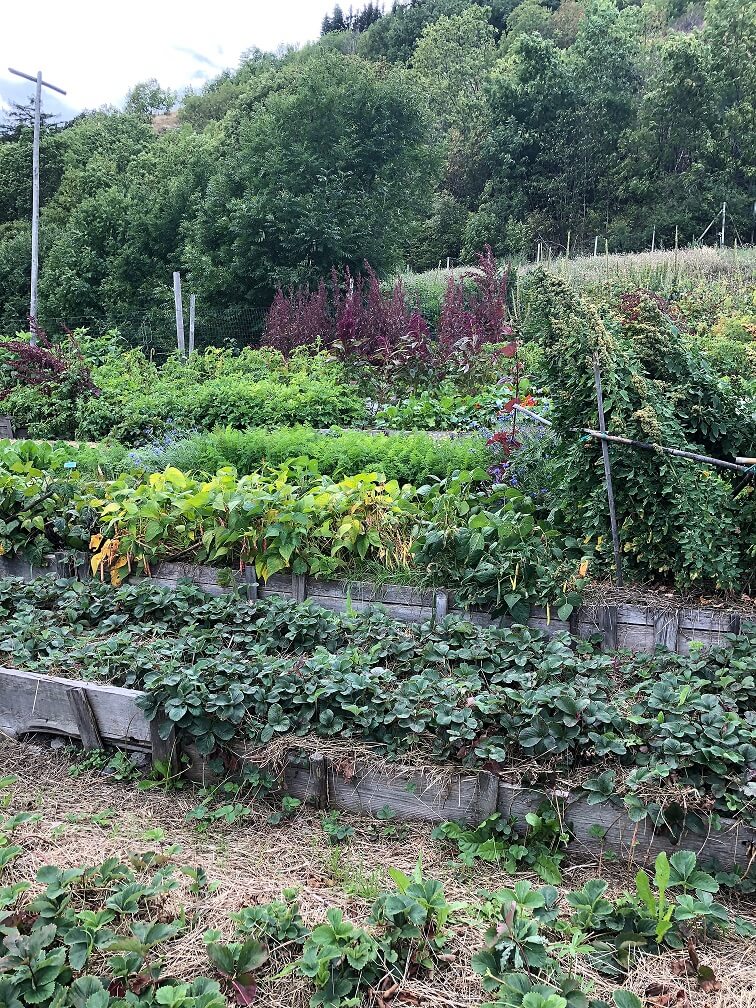
Robert and Edith’s Garden
Such a beautiful garden!
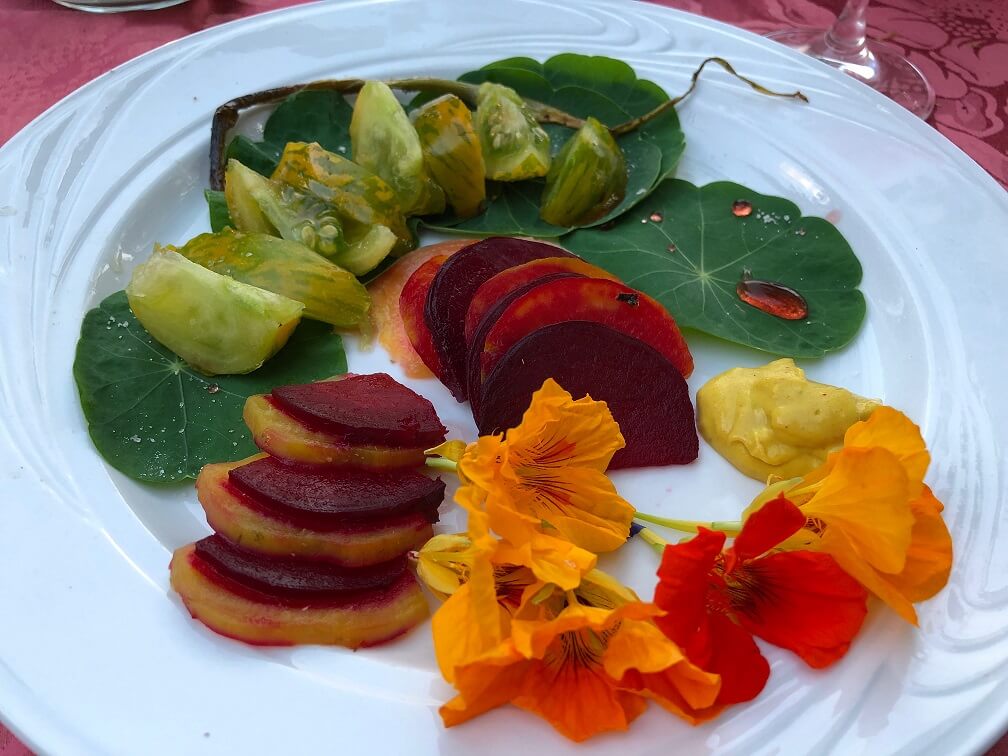
Brunnenburg Farm to Table Eating
We had many opportunities to eat local food, right off the farm, such as these heirloom beets and tomatoes with nasturtium.
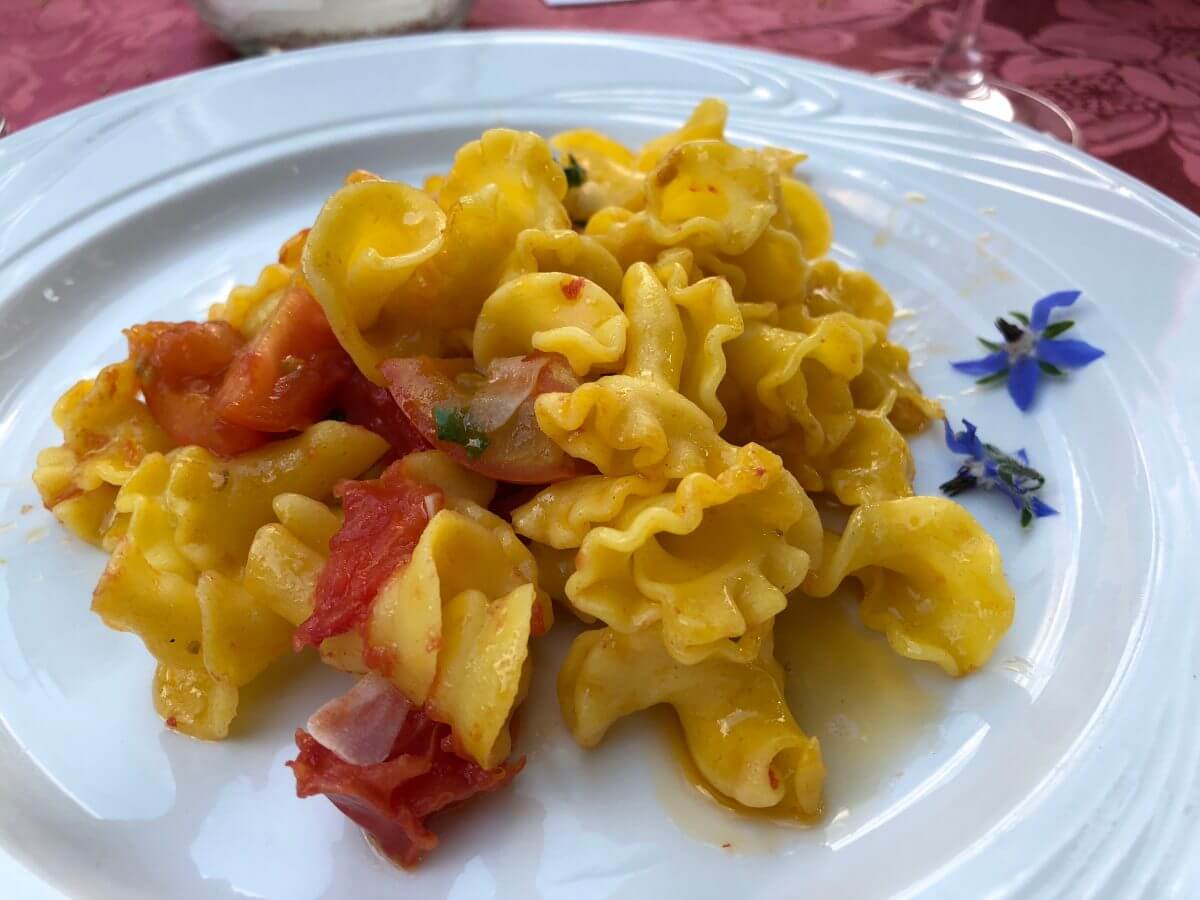
Brunneburg Farm to Table Eating
This fresh pasta with grains, tomatoes and flowers from the garden was so good.
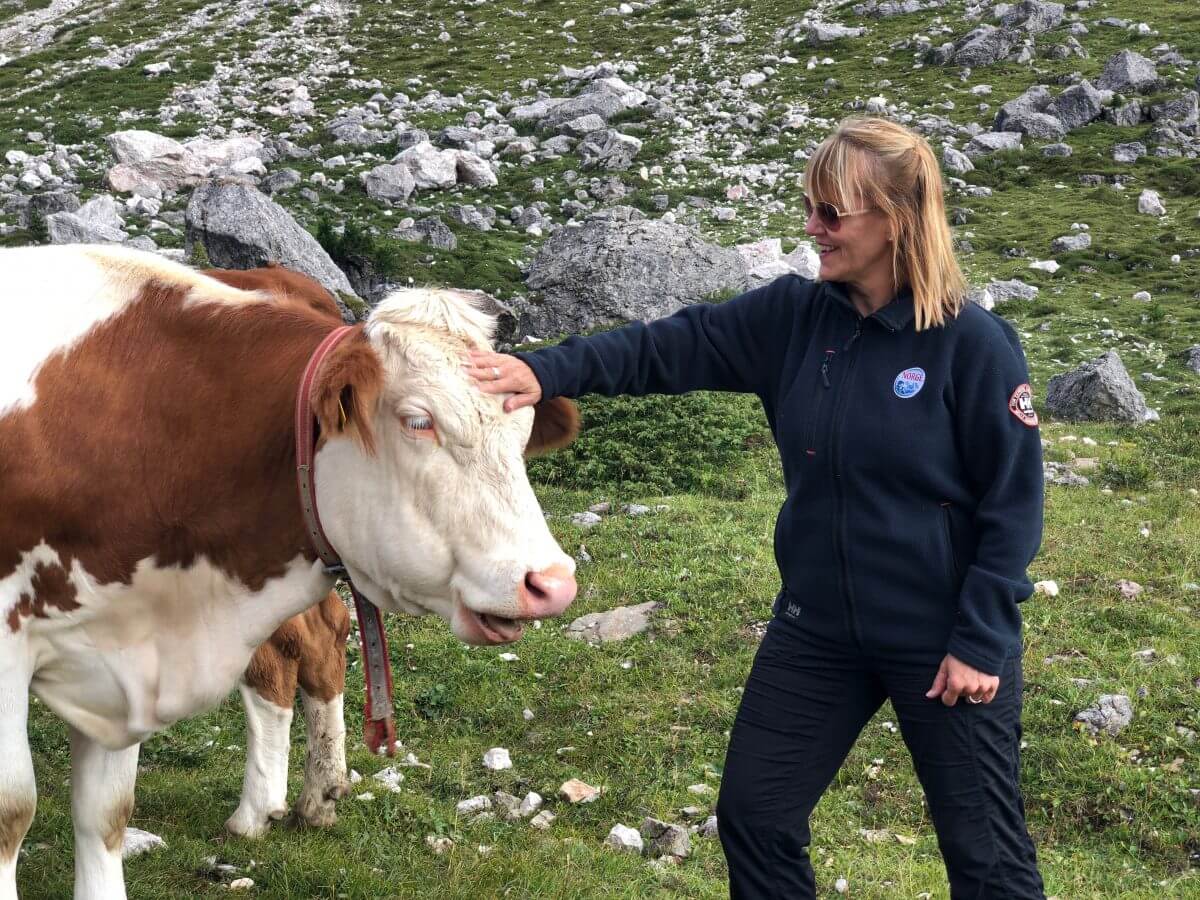
Alpine Cows
I just could not get enough of the cute alpine cows I saw all over the place, with charming bells around their necks. The sound of cow bells chiming and ringing through the valleys was one of my favorite sounds.

Hiking in Dolomites
The Dolomites are in the South Tyrol and we spend three days hiking to this magnificent region!

Dolomites Guesthouses
The guesthouses on the alpine meadows in the Dolomites were so quaint.

Chanterelles
These were used liberally in cooking.
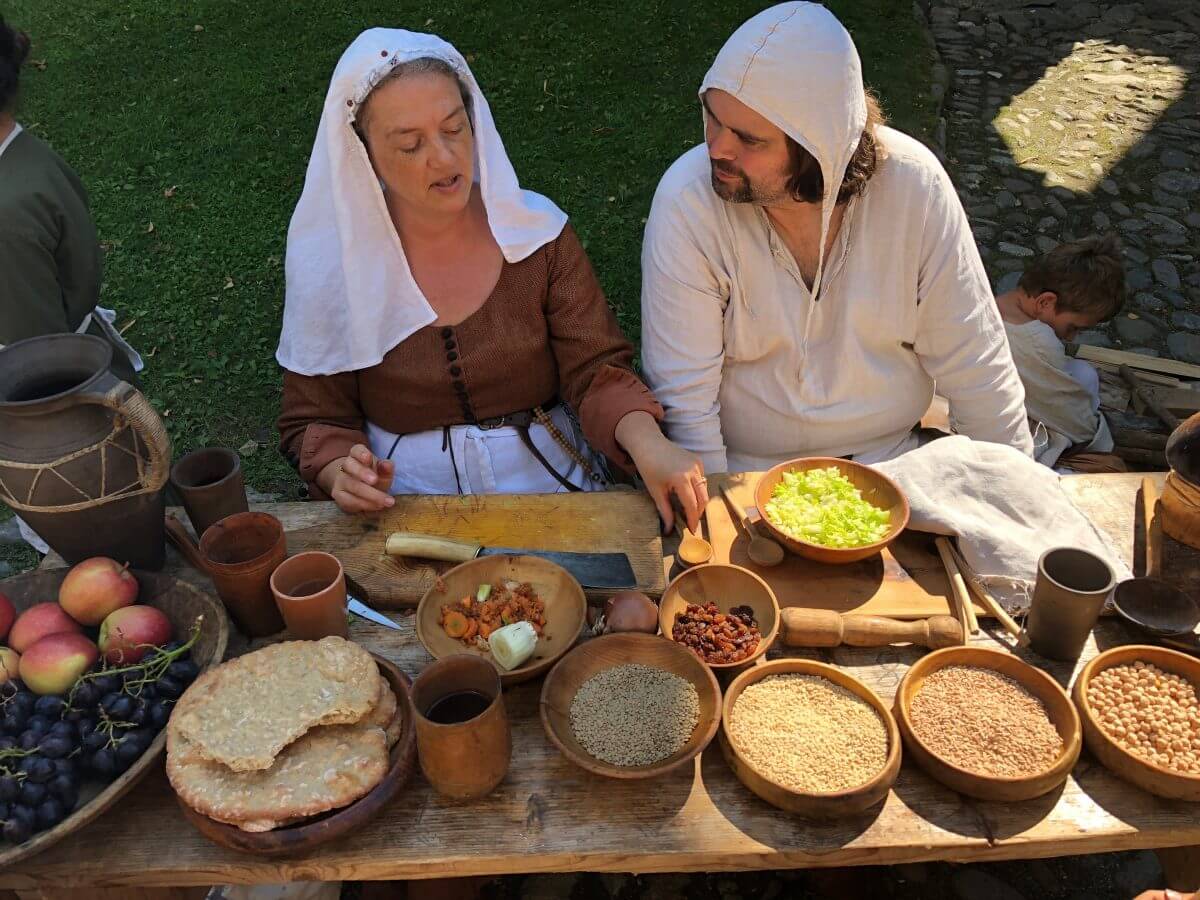
Medieval Foods, Schloss Tirol
Just above Brunnenburg Castle is Tirol Castle, a very important historic landmark. We visited their Medieval Festival, where we say a display of local, historic foods, like these.
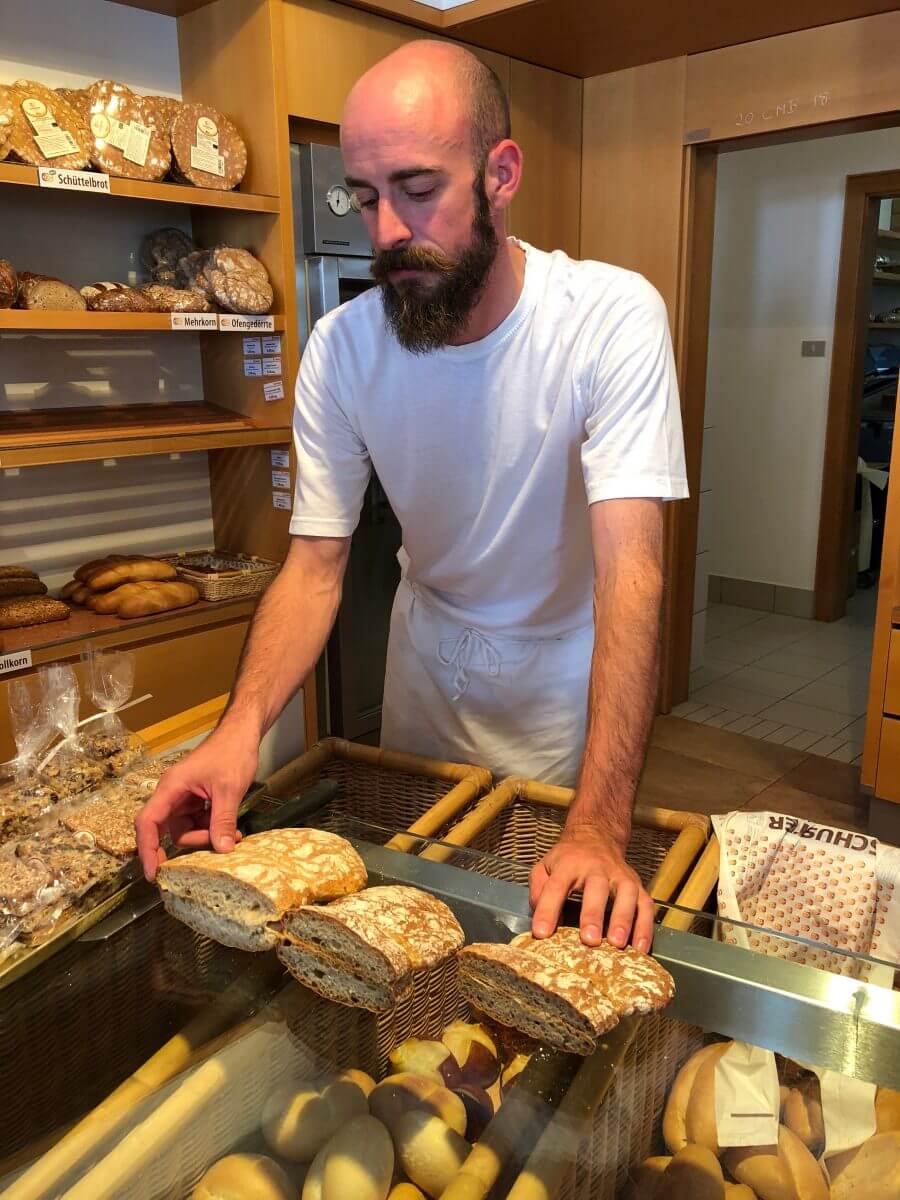
Schuster Bakery, Mals
I learned how to make bread (and even got some sourdough starter to take back home) with Franz, a fourth-generation baker at this beautiful, traditional bakery in South Tyrol.

Resio
This haunting image is so beautiful–a medieval town was destroyed during the fascist period to make way for a dam, and the only thing remaining in this flooded town was the old church tower.
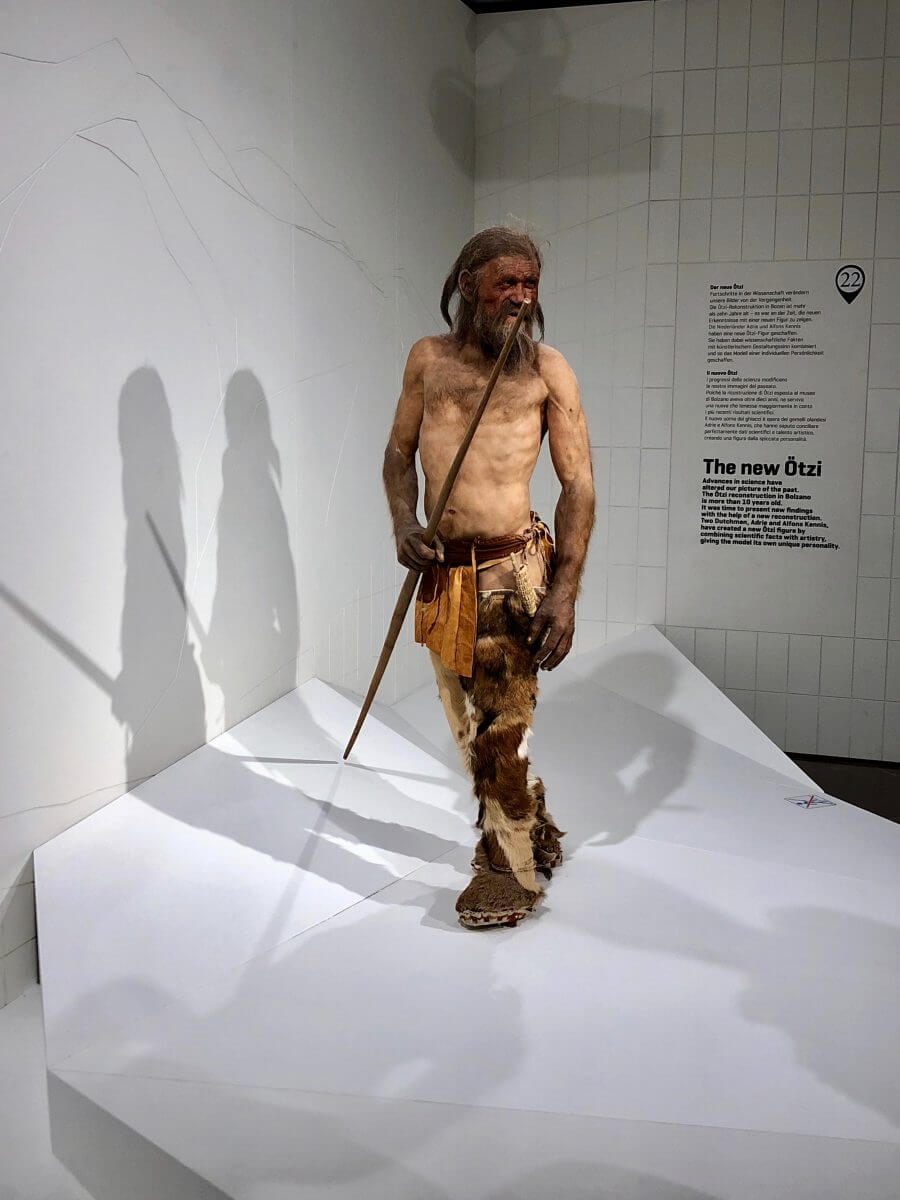
We got to visit the Otzi museum in South Tyrol, which houses the world’s oldest, best preserved mummy–Otzi, who was discovered not far from Brunnenburg in a melting glacier. He was complete with his clothing, shoes, tools, weapons, and stomach full of food! They learned a lot about the Copper Age from studying Otzi. I saw his mummy, and this is a reproduction of him.
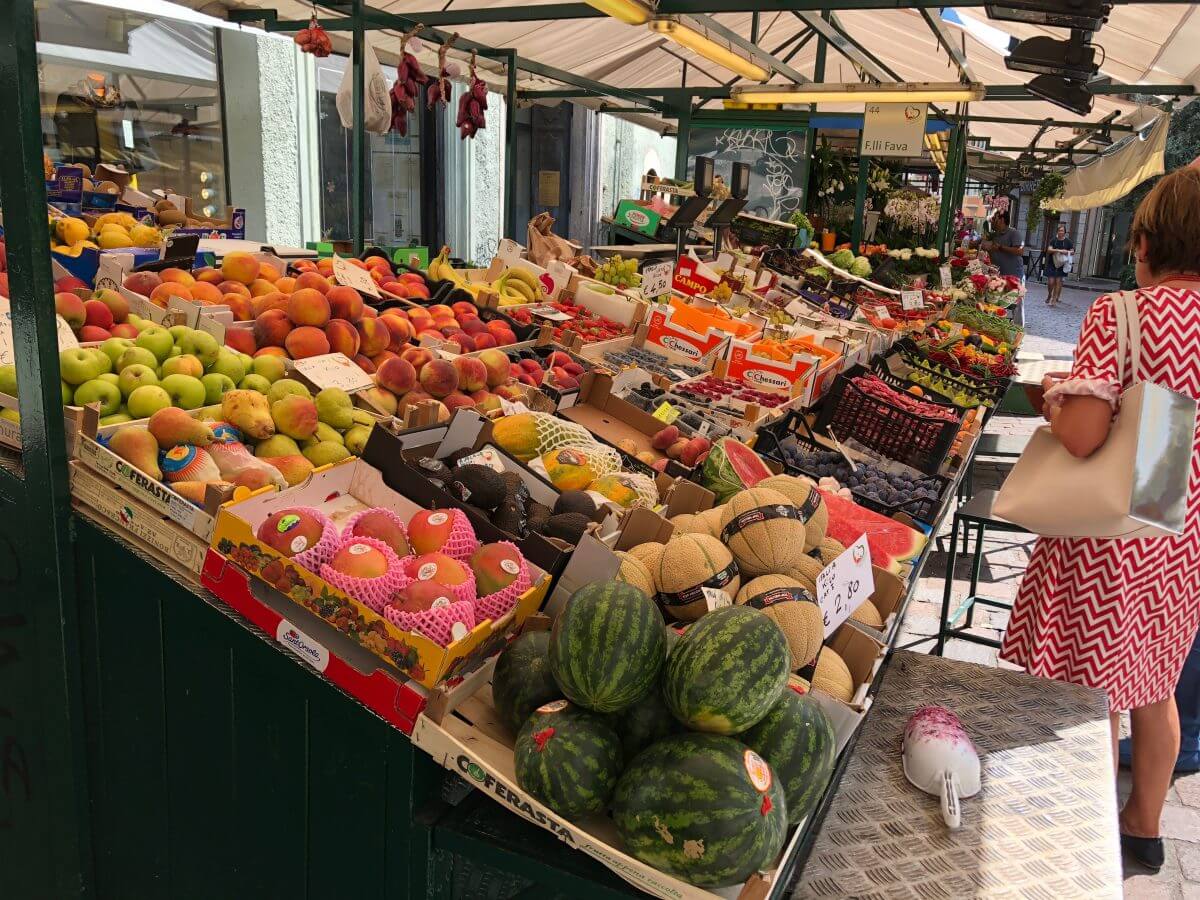
Bolzano Market
So much beautiful produce on display at Bolzano, the largest city in South Tyrol.

Gelato, Bolzano
I discovered that there are many gelato shops that have at least one flavor of vegan gelato. This shop had 6 flavors! What a treat!

Cooking with Nettles
The South Tyrolean diet was all about making something of nothing–eating what was local and available. There are many wild herbs that are part of the cooking. And nettles are used widely in many dishes. I learned how to cook with them, adding them to dishes like knudel (dumplings).
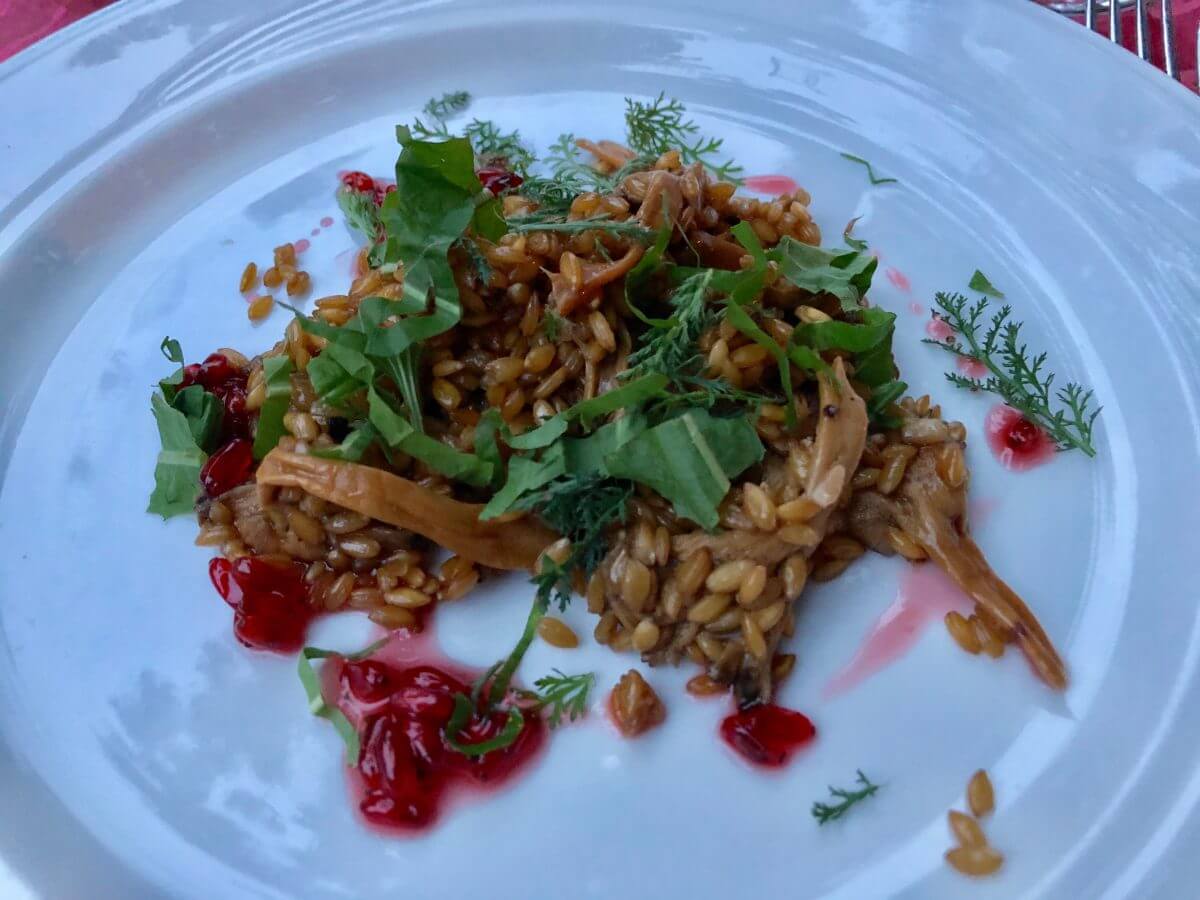
Otzi Meal, Brunnenburg Castle
For my final meal, Nik prepared foods that Otzi ate, including this ancient grain served with a wild berry and alpine herbs. It was my favorite meal of the trip.
I hope you get a chance to visit South Tyrol! To learn more about this area, read my articles:
Wine Traditions in the South Tyrol
Bread Making Traditions in the South Tyrol
South Tyrol Chestnut Traditions
Turning South Tyrolean Food Traditions into Markets
And this Story Map from my student group at Green Mountain College.


